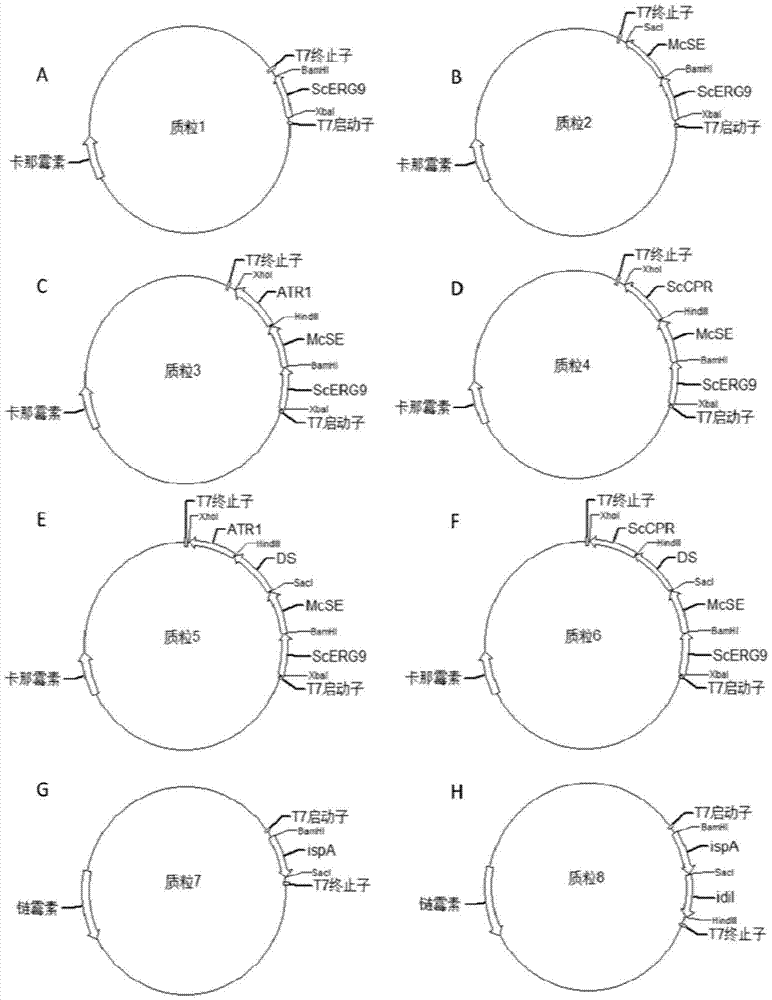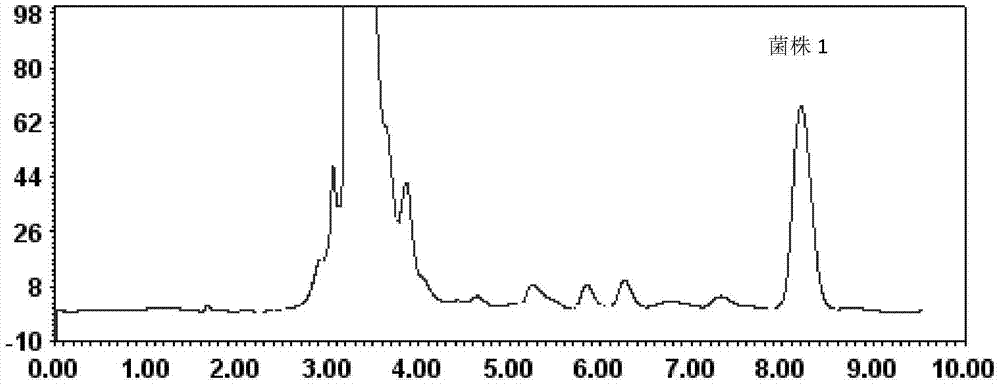Escherichia coli genetic engineering strain and construction method for synthesizing dammarenediol
A technology of genetically engineered strains and dammarediol, applied in the biological field, can solve the problem of no biosynthesis of dammarediol, etc., and achieve the effects of easy metabolic engineering transformation and simple pathway regulation.
- Summary
- Abstract
- Description
- Claims
- Application Information
AI Technical Summary
Problems solved by technology
Method used
Image
Examples
Embodiment 1
[0069] Embodiment 1 Construction of dammarenediol synthesis expression vector
[0070] (1) Acquisition of related genes
[0071] Using the Saccharomyces cerevisiae W303-1a (U.S., ATCC) genome as a template, and using the sequences SEQ ID NO.8 and SEQ ID NO.9 as primers, the squalene synthase gene ScERG9 ( SEQ ID NO. 1).
[0072] According to the amino acid sequence of 2,3-oxosqualene synthase in Methylococcus capsula, codon optimization for Escherichia coli was carried out, and the 2,3-oxosqualene synthase gene was synthesized by GenScript Biotechnology Co., Ltd. McSE, (SEQ ID NO. 2).
[0073] According to the amino acid sequence of cytochrome-NADPH-reductase 1 in Arabidopsis thaliana truncated by 45 amino acid residues at the C-terminus, the codon optimization for Escherichia coli was carried out, and the truncated C-terminus was synthesized by Jinweizhi Biotechnology Co., Ltd. Arabidopsis cytochrome-NADPH-reductase 1 gene ATR1 (SEQ ID NO.3) of 45 amino acid residues.
[...
Embodiment 2
[0098] Embodiment 2 Construction of dammarenediol Escherichia coli production strain
[0099] The plasmid 5 was transformed into Escherichia coli (Escherichia coli) BL21 (DE3) to obtain a genetically engineered Escherichia coli strain for synthesizing dammarenediol, which was named strain 1.
[0100] The Escherichia coli transformation method of plasmid 5 is as follows: add plasmid 5 into 50ul Escherichia coli BL21(DE3) competent cells, bathe in ice for 30min, and heat shock at 42°C for 90s for transformation. Add 1ml of LB medium, rejuvenate at 37°C for 1 hour, collect the cells and spread them on LB plates for kanamycin resistance screening, and culture overnight at 37°C. After overnight culture, colonies were removed for colony PCR verification, positive transformants were selected for sequencing verification, and the positive transformants with correct sequencing were named strain 1.
Embodiment 3
[0101] Embodiment 3 Construction of Escherichia coli genetically engineered strains for synthesizing dammarenediol
[0102] The plasmid 6 was transformed into Escherichia coli (Escherichia coli) BL21 (DE3) to obtain a genetically engineered Escherichia coli strain for synthesizing dammarenediol, which was named strain 2.
[0103] The Escherichia coli transformation method of plasmid 6 is the same as that in Example 2.
[0104] In order to control the recombinant strains and facilitate the comparative analysis of metabolites, Escherichia coli containing pET28a(+) empty plasmid was constructed according to the above transformation method, and named as strain 5.
PUM
 Login to View More
Login to View More Abstract
Description
Claims
Application Information
 Login to View More
Login to View More - R&D
- Intellectual Property
- Life Sciences
- Materials
- Tech Scout
- Unparalleled Data Quality
- Higher Quality Content
- 60% Fewer Hallucinations
Browse by: Latest US Patents, China's latest patents, Technical Efficacy Thesaurus, Application Domain, Technology Topic, Popular Technical Reports.
© 2025 PatSnap. All rights reserved.Legal|Privacy policy|Modern Slavery Act Transparency Statement|Sitemap|About US| Contact US: help@patsnap.com



